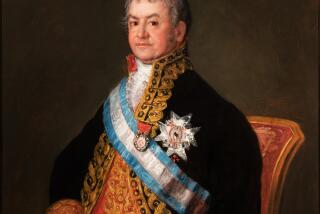Victor Hugo’s rarely seen art is as intimate and innovative as his famous books
When the French writer Victor Hugo died in 1885, nearly 2 million people joined his funeral procession in Paris. The poet, novelist and dramatist had written some of the most revered books of all time, including “Les Miserables” and “The Hunchback of Notre-Dame,” and had distinguished himself as one of the finest minds of his generation.
Unknown to his legions of fans was the fact that Hugo was also an accomplished artist, leaving behind nearly 3,000 works of pen-and-ink, which would later gain acclaim in the art world thanks to Hugo’s unique vision.
More than 75 of those drawings (and a handful of photographs) are on display at the Hammer Museum through Dec. 30 in an exhibition titled, “Stones to Stains: The Drawings of Victor Hugo.”
“One of the things I find most extraordinary about them was how incredibly innovative they were for the time,” says co-curator Cynthia Burlingham, who is also director of the UCLA Grunwald Center for the Graphic Arts. “He uses fingerprints, he splatters ink on paper and lets it pool and change … he used the nib of a quill pen, but he would also draw the feather across the ink to make waves.”
Many of his drawings — which he shared only with close friends and family — were created during his nearly 20-year exile to the Channel Islands of Jersey and Guernsey, between France and England, when his humanist ideals and liberal political views put him at odds with Napoleon III.
His isolation resulted in haunting images of landscape and architecture, as well as a variety of carefully rendered abstract patterns.
“You can imagine he spent a great deal of time walking the beaches and looking at the sky,” says Burlingham of Hugo’s time in exile. “He had a studio at the top of his house with large windows so he could observe the sea and the storms.”
Rarely did Hugo draw human forms, but there is a particularly striking exception: a picture of a man hanging, titled “Ecce Lex.” It was created in 1854 to protest the execution of a local criminal named John Charles Tapner and is one of a few images of Hugo’s publicly circulated thanks to his passionate opposition to the death penalty.
ALSO:
More to Read
The biggest entertainment stories
Get our big stories about Hollywood, film, television, music, arts, culture and more right in your inbox as soon as they publish.
You may occasionally receive promotional content from the Los Angeles Times.











